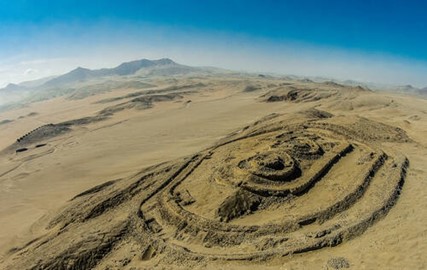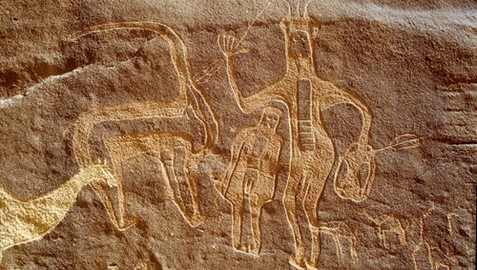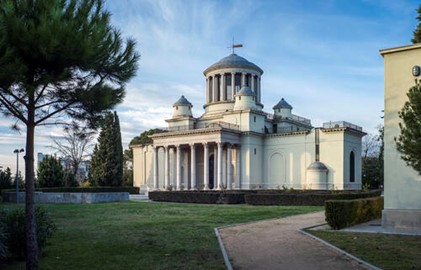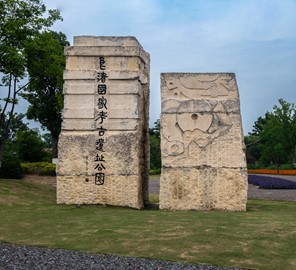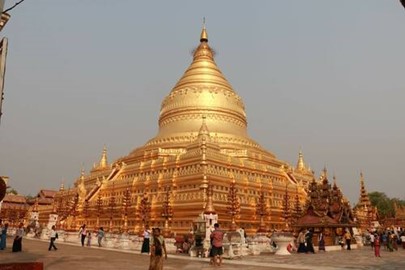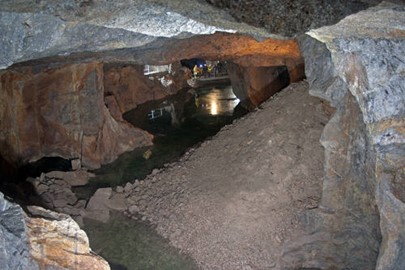category :: cultural
Chankillo
Chankillo, a UNESCO World Heritage site in Peru, recognized in 2021, is a 2,300-year-old archaeological complex in the Casma Valley, featuring the oldest known solar observatory in the Americas. Built by a pre-Inca civilization around 300 BCE, it includes 13 stone towers aligned to track the sun’s annual arc, alongside a fortified temple and ceremonial plaza. This sophisticated astronomical site reflects advanced knowledge of solar cycles, likely used for seasonal rituals and agriculture, offering a rare gl... Read More
Rosia Montana
Rosia Montana, a UNESCO World Heritage site in Romania, recognized in 2021 and listed as World Heritage in Danger, is a historic gold mining landscape dating back to the Roman era, known as Alburnus Maior. Featuring extensive underground galleries, ancient settlements, and advanced Roman mining technology, it reflects over 2,000 years of human ingenuity and cultural evolution in the Apuseni Mountains. Despite threats from potential modern mining, its well-preserved features highlight its global significance... Read More
Petroglyphs of Lake Onega and the White Sea
The Petroglyphs of Lake Onega and the White Sea, a UNESCO World Heritage site in Russia, recognized in 2021, are prehistoric rock carvings in Karelia, dating from 5000 to 2000 BCE. Etched into granite by hunter-gatherer communities, these 4,500+ images depict animals, boats, and human figures, reflecting spiritual beliefs and daily life in the Neolithic era. Found at 26 sites along rugged shores, they offer a rare glimpse into ancient northern Eurasian culture, showcasing Russia’s rich archaeological herita... Read More
Hima
Hima, a UNESCO World Heritage site in Saudi Arabia, recognized in 2021, is an ancient cultural landscape in the southwest, renowned for one of the world’s largest rock art collections. Spanning millennia, its petroglyphs and inscriptions depict hunting, wildlife, and daily life from 7,000 years ago, etched by travelers along a historic caravan route. Featuring diverse scripts like Musnad, Thamudic, Greek, and Arabic, alongside still-functioning wells, Hima offers a vivid snapshot of human history and cultur... Read More
Ljubljana
The Works of Jože Plečnik in Ljubljana, a UNESCO World Heritage site in Slovenia, recognized in 2021, are a collection of urban designs by architect Jože Plečnik, transforming Ljubljana from 1921 to 1957. His visionary projects, including the Triple Bridge, Central Market, and landscaped riverbanks, blend classical influences with modernist simplicity, creating a human-centric cityscape. Reflecting Slovenia’s cultural identity, these works showcase Plečnik’s innovative approach to architecture and urban pla... Read More
Paseo del Prado and Buen Retiro
Paseo del Prado and Buen Retiro, a UNESCO World Heritage site in Spain, recognized in 2021, is a historic urban landscape in Madrid blending culture, nature, and science from the 16th century onward. The tree-lined Paseo del Prado, Spain’s first public promenade, links iconic museums like the Prado with the lush Buen Retiro Park, a former royal retreat turned public garden. This integrated design reflects Enlightenment ideals, showcasing Spain’s pioneering approach to urban planning and leisure, enriched by... Read More
Arslantepe Mound
Arslantepe Mound, a UNESCO World Heritage site in Turkey, recognized in 2021, is a 5,000-year-old archaeological tell near Malatya, tracing human settlement from the 4th millennium BCE to the Roman era. This ancient site reveals the rise of early state societies with mudbrick palaces, a temple, and the world’s oldest swords, reflecting advanced metallurgy and governance. Known as the 'Lion Hill' for its Hittite lion statues, Arslantepe offers a key window into Turkey’s prehistoric urban development and cult... Read More
The Slate Landscape of Northwest Wales
The Slate Landscape of Northwest Wales, a UNESCO World Heritage site in the UK, recognized in 2021, is a historic industrial region in Gwynedd shaped by slate quarrying from the 18th to 20th centuries. Featuring dramatic quarries, railways, and workers’ villages, it powered the global roofing slate trade, with sites like Penrhyn and Dinorwig showcasing innovative engineering and rugged beauty. This cultural landscape reflects Wales’ industrial heritage and social history, highlighting the resilience of comm... Read More
Church of Atlántida
The Church of Atlántida, a UNESCO World Heritage site in Uruguay, recognized in 2021, is a modernist masterpiece designed by engineer Eladio Dieste in 1958 near Montevideo. Known as Iglesia de Cristo Obrero, its innovative brick architecture features undulating walls and a bell tower built without steel reinforcement, showcasing Dieste’s pioneering use of reinforced ceramics. This humble yet striking structure blends functionality with aesthetic grace, reflecting Uruguay’s 20th-century architectural ingenui... Read More
Ferrous Metallurgy Sites
The Ferrous Metallurgy Sites, a UNESCO World Heritage site in Burkina Faso, recognized in 2019, are ancient iron production complexes spanning five locations, with the oldest at Douroula dating to the 8th century BCE. Featuring standing natural-draft furnaces, mines, and traces of dwellings, these sites showcase early smelting techniques and their evolution through the second millennium CE at Tiwêga, Yamané, Kindibo, and Békuy. They highlight Burkina Faso’s pioneering role in African metallurgy, preserving ... Read More
Liangzhu
The Archaeological Ruins of Liangzhu City, a UNESCO World Heritage site in China, recognized in 2019, are a 5,300-year-old urban settlement in Zhejiang Province, showcasing the Neolithic Liangzhu culture (3300-2300 BCE). Featuring a sophisticated city layout with moats, walls, a palace, and intricate jade artifacts, it reflects early state formation and advanced hydraulic engineering in East Asia. This well-preserved site offers a rare glimpse into China’s ancient urban civilization, highlighting its cultur... Read More
Babylon
Babylon, a UNESCO World Heritage site in Iraq, recognized in 2019, is an ancient Mesopotamian city south of Baghdad, thriving from the 18th to 6th centuries BCE as a capital of the Babylonian Empire. Renowned for its mudbrick ruins—including remnants of the Ishtar Gate, ziggurat foundations, and city walls—it reflects advanced urban planning, architecture, and cultural achievements like the Code of Hammurabi. This iconic site embodies Iraq’s pivotal role in early civilization, offering a tangible link to on... Read More
Bagan
Bagan, a UNESCO World Heritage site in Myanmar, recognized in 2019, is an ancient city along the Irrawaddy River, famed as the capital of the Pagan Kingdom from the 9th to 13th centuries. Its vast plain features over 3,500 Buddhist temples, pagodas, and monasteries, showcasing intricate brick architecture and religious art from a golden era of Burmese culture. This sacred landscape reflects Myanmar’s historical devotion and architectural prowess, offering a stunning testament to a once-thriving medieval civ... Read More
Budj Bim
Budj Bim, a UNESCO World Heritage site in Australia, recognized in 2019, is a cultural landscape showcasing one of the world’s oldest aquaculture systems, developed by the Gunditjmara people over 6,600 years ago. Featuring stone channels, weirs, and traps built along ancient lava flows, it enabled sustainable eel harvesting and supported permanent settlements with circular stone huts. The first Australian site listed solely for its Aboriginal cultural significance, Budj Bim reflects the Gunditjmara’s ingenu... Read More
Churches of the Pskov School of Architecture
The Churches of the Pskov School of Architecture, a UNESCO World Heritage site in Russia, recognized in 2019, are a group of medieval religious buildings in Pskov, dating from the 12th to 17th centuries. Featuring distinctive whitewashed stone structures with bell towers and porches, they reflect a unique regional style that influenced Russian architecture during the Pskov Republic’s independence. These well-preserved churches and monasteries highlight Russia’s cultural and artistic heritage, showcasing loc... Read More
Dilmun Burial Mounds
The Dilmun Burial Mounds, a UNESCO World Heritage site in Bahrain, recognized in 2019, are a vast necropolis of over 11,000 ancient tombs dating from 2050 to 1750 BCE, linked to the Bronze Age Dilmun civilization. These beehive-shaped, stone-built mounds, scattered across fields, reflect a sophisticated funerary tradition tied to Bahrain’s role as a thriving trade hub in the Persian Gulf. Offering insight into Dilmun’s social structure and beliefs, this archaeological landscape preserves a key chapter of th... Read More
Erzgebirge Mining
Erzgebirge Mining, a UNESCO World Heritage site spanning Czechia and Germany, recognized in 2019, is a historic mining region in the Ore Mountains active from the 12th to 20th centuries. Featuring mines, smelters, and towns like Freiberg and Jáchymov, it showcases medieval to modern mining technology that fueled Europe’s silver, tin, and uranium booms. This cross-border landscape reflects centuries of industrial innovation and cultural exchange, highlighting the region’s pivotal role in shaping European met... Read More
Sheki
The Historic Centre of Sheki, a UNESCO World Heritage site in Azerbaijan, recognized in 2019, is a well-preserved Silk Road city that flourished from the 18th to 19th centuries. Centered around the Khan’s Palace with its vibrant stained-glass shebeke windows, it features stone houses, caravanserais, and bazaars reflecting Caucasian and Persian influences. Nestled in a scenic valley, Sheki’s intact urban fabric showcases Azerbaijan’s rich architectural heritage and its role as a thriving trade and craft hub ... Read More
Jaipur
Jaipur City, Rajasthan, a UNESCO World Heritage site in India, recognized in 2019, is an 18th-century planned city founded by Maharaja Sawai Jai Singh II, famed as the 'Pink City' for its rose-hued buildings. Its grid layout, blending Hindu and Mughal architecture, features landmarks like the Hawa Mahal and City Palace, reflecting innovative urban design and astronomical precision with the Jantar Mantar observatory. This vibrant capital showcases India’s royal heritage and cultural synthesis, embodying a un... Read More
Jodrell Bank Observatory
Jodrell Bank Observatory, a UNESCO World Heritage site in England, recognized in 2019, is a pioneering radio astronomy facility established in 1945 in Cheshire, renowned for its iconic Lovell Telescope. Built in 1957, this 76-meter dish tracked early space missions and advanced cosmic research, shaping modern astrophysics with discoveries like pulsars. Set in a rural landscape, it reflects England’s scientific legacy, blending cutting-edge technology with historical significance in humanity’s exploration of... Read More
Krzemionki Mining Region
The Krzemionki Mining Region, a UNESCO World Heritage site in Poland, recognized in 2019, is a prehistoric flint mining complex active from 3900 to 1600 BCE in the Świętokrzyskie region. Featuring over 4,000 underground shafts and chambers, it showcases advanced Neolithic and Bronze Age mining techniques for crafting tools, preserved alongside surface settlements. This archaeological site reflects Poland’s early technological prowess and cultural development, offering a rare glimpse into prehistoric industr... Read More
Kladruby nad Labem Carriage Horses
Kladruby nad Labem Carriage Horses, a UNESCO World Heritage site in Czechia, recognized in 2019, is a historic stud farm established in 1579 to breed Kladruber horses for Habsburg imperial ceremonies. Set along the Elbe River, its pastoral landscape features stables, pastures, and woodlands, preserving a unique equine lineage and traditional horsemanship. This living cultural site reflects Czechia’s equestrian heritage and meticulous landscape design, showcasing centuries of selective breeding for strength ... Read More
Prosecco Hills
The Prosecco Hills, a UNESCO World Heritage site in Italy, recognized in 2019, are a picturesque wine-growing region in Veneto famed for producing Prosecco sparkling wine since the 17th century. Its rolling vineyards, terraced slopes, and small villages reflect a harmonious blend of human cultivation and natural beauty, shaped by traditional viticulture techniques. This cultural landscape showcases Italy’s agricultural heritage and sustainable land use, offering a scenic testament to the region’s enduring w... Read More
Xiengkhuang – Plain of Jars
Xiengkhuang – Plain of Jars, a UNESCO World Heritage site in Laos, recognized in 2019, is a mysterious archaeological landscape featuring over 2,100 giant stone jars scattered across the Xiengkhuang Plateau, dating from 500 BCE to 500 CE. Likely used for funerary rituals by an Iron Age culture, these hollowed megaliths, some weighing up to 10 tons, dot hilltops and valleys amid ancient settlements. This enigmatic site reflects Laos’ prehistoric past, offering a haunting glimpse into a lost civilization’s be... Read More
Mozu Tombs
The Mozu Tombs, a UNESCO World Heritage site in Japan, recognized in 2019, are a cluster of ancient burial mounds in Osaka from the Kofun period (3rd to 7th centuries CE), including the massive Daisen Kofun, one of the world’s largest tombs. Shaped like keyholes, circles, and squares, these earthen monuments, surrounded by moats, reflect the hierarchical society and funerary traditions of early Japanese rulers. This well-preserved necropolis showcases Japan’s ancient engineering and cultural heritage, offer... Read More
